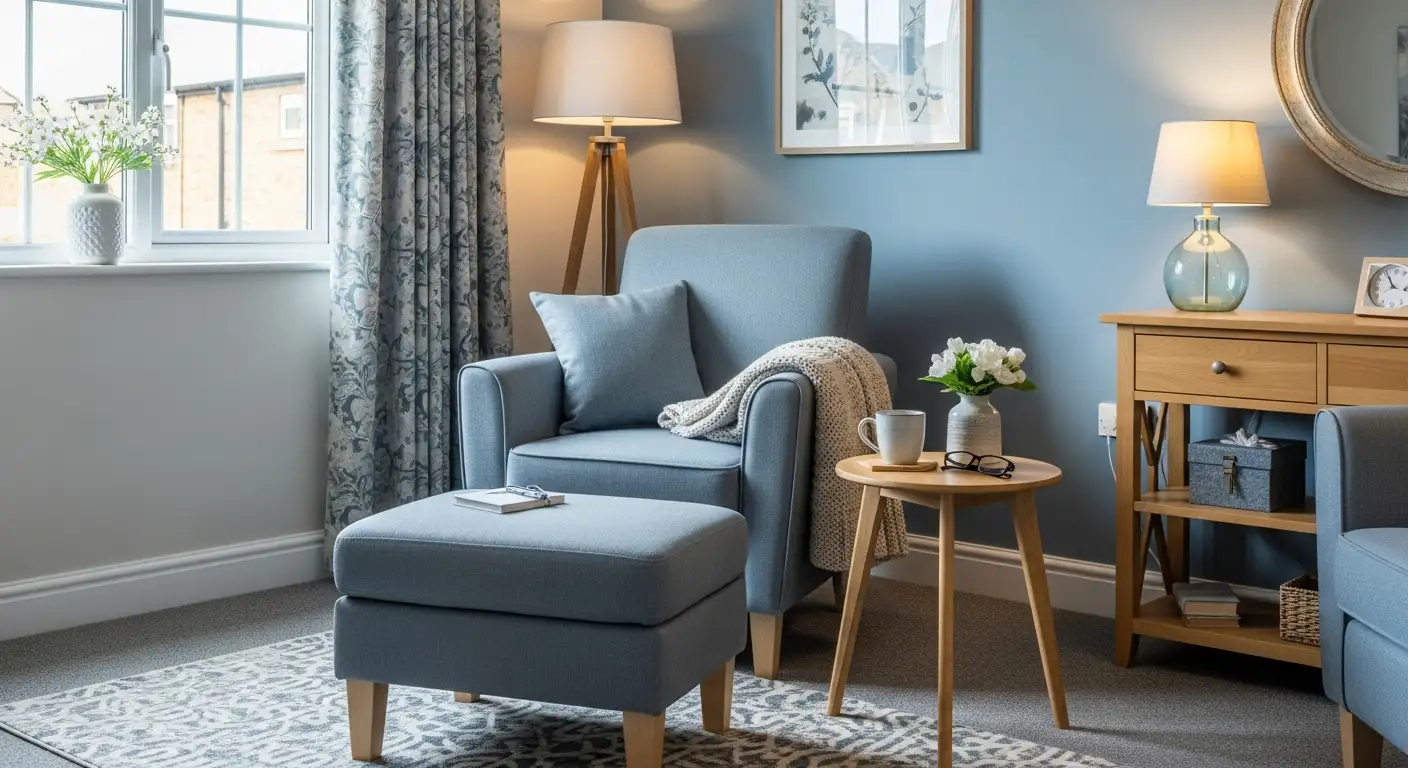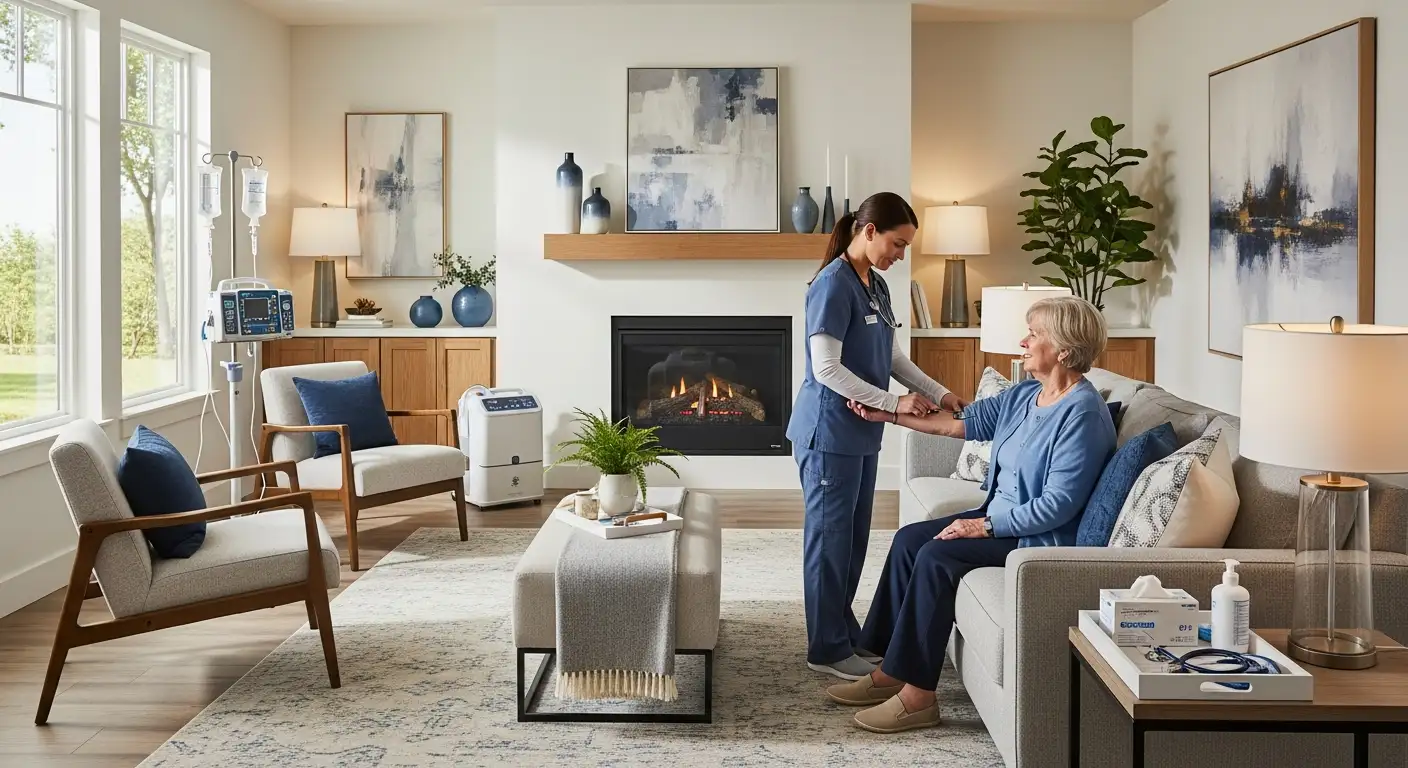Introduction: A New Phase in Home Care
As the trend of aging in place grows, introducing a new home care aide becomes a pivotal event in a family's journey to support their loved ones. Transitioning to a new caregiver, especially for seniors, requires careful planning and communication to ensure comfort and continuity of care. This article provides insights and practical advice on helping seniors adjust effectively to new home caregivers, emphasizing the significance of trust, communication, and emotional support in this transition.
Preparing for the Transition: Families Leading the Way
How can families support seniors in transitioning to a new home caregiver?
Families play a vital role in easing the process of transitioning to a new home caregiver for seniors. The first step is initiating discussions about the upcoming change well in advance. This early notification allows seniors to process the information, ask questions, and express any concerns they may have, ultimately reducing anxiety associated with this significant life transition.
Involving seniors in caregiver selection
Involving seniors in the caregiver selection process empowers them and ensures that their preferences are respected. When seniors have a say in choosing who will provide their care, they are more likely to feel comfortable and receptive to the new caregiver. Families can assist by facilitating meetings between the seniors and prospective caregivers, emphasizing the importance of finding a compatible personality that meets the senior's care needs.
Overlapping caregiver services
Another effective strategy is to arrange for the outgoing and incoming caregivers to overlap their services. This approach can help create a smoother introduction for the senior, allowing them to adjust gradually while still receiving stable support. During this period, the new caregiver can learn the best ways to care for the senior, aided by guidance from the previous caregiver, leading to a more confident adjustment.
Maintaining routines
Additionally, it’s crucial to maintain consistent daily routines, including mealtimes, medication schedules, and activities. Familiarity provides a sense of security, helping seniors adapt to the new caregiver. Acknowledging emotional responses and providing reassurance during the initial days can foster trust and enhance comfort in the caregiving relationship.
Smooth Transition from Hospital to Home Care
What are some practical tips for ensuring a smooth transition from a hospital to a home care environment?
To ensure a smooth transition from the hospital to home care, consider the following steps:
- Understand the discharge plan: Discuss prescribed medications, follow-up appointments, and any necessary changes in care with the healthcare team.
- Assess care needs: Evaluate the support needed for daily activities and mobility. Consider involving home health care services if additional assistance is required.
- Review medications: Organize and clarify medications to avoid errors. Maintaining a consistent medication schedule is essential for health management.
- Prepare the home: Ensure the living environment is safe. This may involve removing hazards, acquiring medical equipment, and making necessary modifications such as installing grab bars or improving lighting.
- Advocate for preferences: Engage with healthcare providers to ensure that your loved one’s preferences and needs are considered in their care plan.
- Provide emotional support: Helping your loved one adjust to this new care environment can aid in their emotional well-being, making them feel comfortable and secure during this transition.
Additional Tips for Transitions
| Step | Key Actions | Importance |
|---|---|---|
| Understand Discharge Plan | Discuss medications and follow-up care with the healthcare team | Prevents confusion about care |
| Evaluate Care Needs | Assess assistance required for mobility and daily tasks | Ensures necessary support |
| Review Medications | Organize medications and create a schedule | Reduces risks of medication errors |
| Prepare the Home | Modify home for safety; install aids | Promotes a secure living environment |
| Advocate Preferences | Communicate loved one’s needs to healthcare providers | Ensures personalized care |
| Emotional Support | Be available for emotional reassurance | Facilitates better adjustment |
By following these steps, families can ensure a smooth transition to home care, thus promoting a supportive and safe environment for their loved ones.
Facilitating Dementia-Friendly Adjustments
How can caregivers and families help seniors with dementia adjust to new caregivers?
To assist seniors with dementia in transitioning to new caregivers, it is essential to approach the change with sensitivity and structure. Maintaining established routines is crucial. Regular meal times, medication schedules, and familiar activities provide a comforting framework amid change.
Effective Communication with Dementia Patients
Effective communication strategies can create a smoother adjustment process. Caregivers should use simple, clear language and maintain eye contact to foster understanding. Minimizing distractions within the environment also aids in focusing attention and reducing confusion, thus enhancing the interaction between the senior and the caregiver.
Family Involvement
Involving family in the adjustment process is important. Families can help by reframing the caregiver’s role as supportive assistants or helpers, reducing feelings of vulnerability in seniors. By encouraging shared activities that highlight the loved one’s interests, families can facilitate connections, ultimately making the interaction feel less threatening.
Caregiver Self-Care
Additionally, caregiver self-care plays a vital role. Caregivers should prioritize their well-being to provide effective emotional support and companionship. When caregivers feel well, they can better support seniors, creating a nurturing environment that eases transitions for individuals managing dementia.
The combination of these strategies creates a framework that supports both the senior and their caregivers during these transformative changes.
Building Trust Between Seniors and Caregivers
What strategies can foster trust and comfort between seniors and their new home caregivers?
Building trust and comfort between seniors and their new home caregivers involves several essential strategies:
Engaging in Open Communication: Caregivers should encourage seniors to express their needs and concerns, ensuring they feel heard and understood. This open dialogue creates a foundation of trust.
Emphasizing Caregiver Reliability: Consistency in the caregiver's actions and fulfilling commitments helps establish a sense of reliability. When seniors know what to expect, they feel more secure in their care.
Providing Seniors with Autonomy: Allowing seniors to make choices regarding their daily routines and activities not only promotes dignity but also reinforces trust. Autonomy encourages a strong sense of self-worth.
Building Rapport: Taking time to learn about the senior’s interests and preferences can improve the caregiver-client relationship. Engaging in discussions about shared hobbies or experiences helps lay the groundwork for a genuine connection.
In summary, fostering trust requires patience, understanding, and an ongoing commitment to building a courteous and respectful relationship between caregivers and seniors.
Creating Strong Connections: Roles of Caregivers
What advice can help caregivers establish strong connections with their senior clients?
Establishing strong connections with senior clients is pivotal for effective caregiving. Caregivers can enhance relationships by actively listening to their clients’ needs and preferences. This not only fosters trust but ensures that caregivers fully understand how to provide tailored care.
Demonstrating empathy and compassion is equally important. When caregivers connect with the emotional experiences of their seniors, they can anticipate needs and create a nurturing environment. For instance, acknowledging feelings of loneliness or discomfort can help alleviate anxiety and provide reassurance.
Engaging clients in activities they enjoy is another excellent way to strengthen bonds. Shared hobbies or interests can create joyful experiences and memorable moments that fortify relationships. Caregivers should encourage seniors to participate in these activities, maximizing their emotional well-being.
Moreover, practicing self-awareness and mindfulness helps caregivers manage their own stress, allowing them to be more present and attentive to their clients. This focus on emotional intelligence is crucial in a caregiving role.
Lastly, building a support network is vital for caregivers themselves. Having access to supportive colleagues or resources promotes caregivers’ well-being, which ultimately enhances the quality of care provided.
By employing these strategies, caregivers can nurture a deeper connection with their senior clients, leading to better outcomes for both parties.
Emphasizing Continued Learning and Cultural Competence
Importance of caregivers' ongoing training
Ongoing training for caregivers is crucial in adapting to the evolving needs of clients. This continual education helps ensure caregivers remain competent in their roles, particularly when assisting individuals with specialized conditions like Alzheimer's and dementia. Caregivers are encouraged to stay informed about best practices and advancements in home health care, ultimately leading to higher quality care and improved outcomes for seniors.
Cultural awareness in caregiving
Cultural competence is a vital aspect of caregiving. Home health aides must be sensitive to the diverse backgrounds and beliefs of their clients. Understanding cultural preferences fosters better communication and strengthens the caregiver-client relationship. By respecting clients' cultural values, caregivers can provide care that aligns with their clients' expectations and comfort levels.
Adapting to clients' diverse backgrounds
Adapting to each client's unique background requires a personalized approach. Caregivers should actively engage in conversations about their clients' life histories, traditions, and expectations. This relationship-building enhances trust and enables caregivers to provide meaningful support. Ultimately, tailored care that reflects a client’s cultural context promotes a more comfortable and effective caregiving experience.
| Topic | Importance | Action Items |
|---|---|---|
| Ongoing Training | Enhances competencies in specialized care needs | Pursue specialized education |
| Cultural Competence | Fosters communication and understanding between caregiver and client | Engage clients in discussions about their preferences |
| Adaptation to Backgrounds | Builds trust and enhances the personal connection between caregiver and client | Personalize care based on clients' life histories and traditions |
Conclusion: Cultivating a Positive Care Environment
The transition to a new home care aide is a complex and sensitive period that can define the future quality of care for seniors. Understanding the importance of early preparation, effective communication, and emotional support can significantly ease this transition. By fostering a nurturing environment and building trust, families and caregivers can ensure that seniors adjust comfortably to new caregivers, maintaining their dignity and quality of life. Encouraging continued learning for caregivers and respecting cultural diversities will contribute to a consistently high-quality care experience. As we embrace these practices, we enhance the well-being of our loved ones and support their desire to age gracefully in their own homes.
References
- 5 Ways to Help Seniors Adjust to a New in Home Caregiver
- Helping Loved Ones Adjust to a New Caregiver - LifeWorx Home Care
- A Guide to Your First Day with a New Home Health Aide - HomeWorks
- Helping Your Loved One Adjust to an In-Home Caregiver
- 4 Tips For Success On Day One As A New Home Health Aide
- How to Have a Successful First Day with a New In-Home Caregiver
- Adjusting to a New Caregiver In Your Loved One's Home
- Tips for Helping Seniors Adjust to a New Caregiver - AgingCare.com
- Home Health Aide Dos And Don'ts: A Useful Guide - NCCDP
- Help a loved one adjust to elder care facility - UnitedHealthcare



